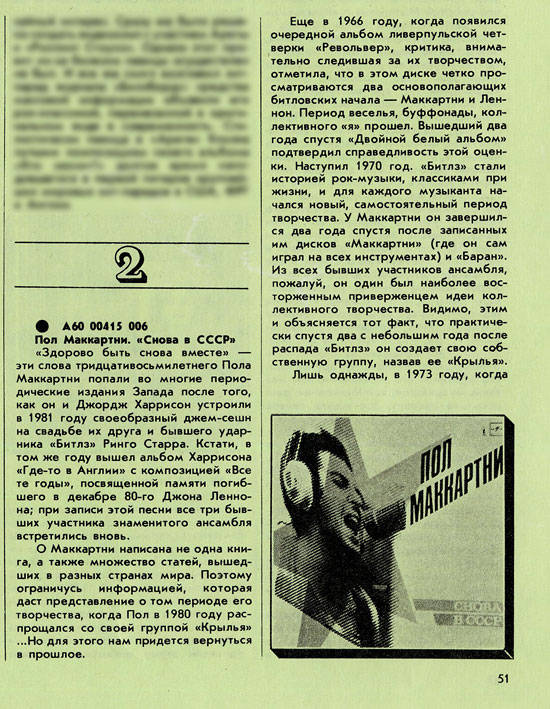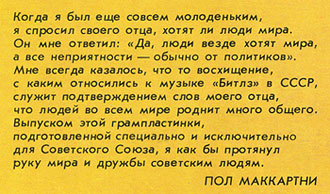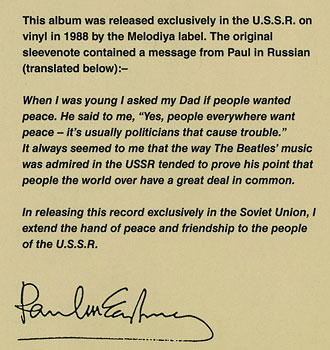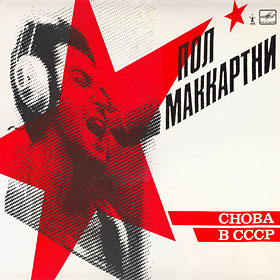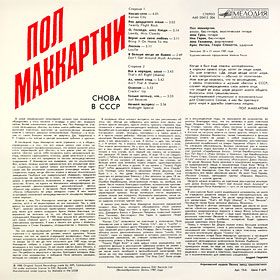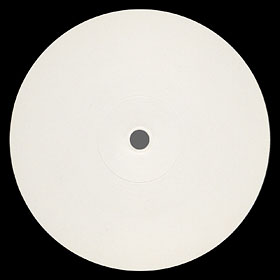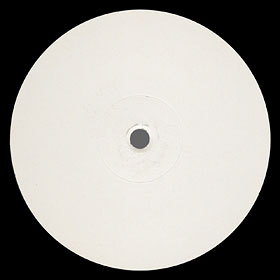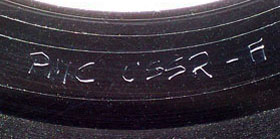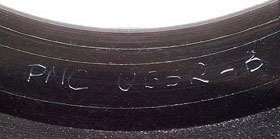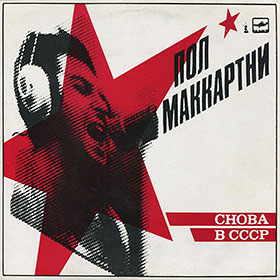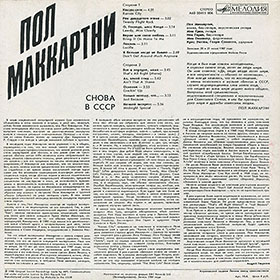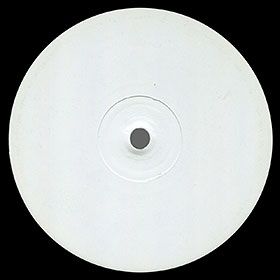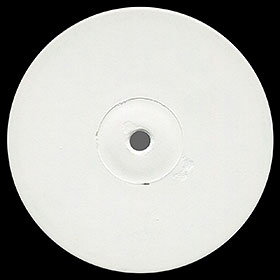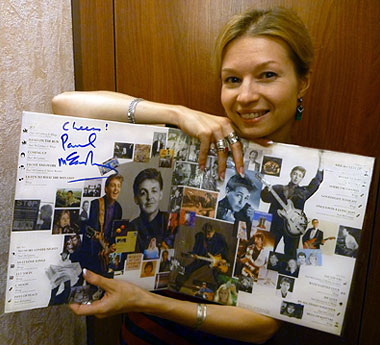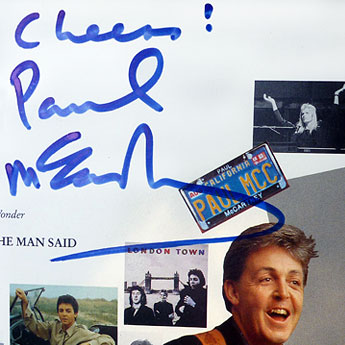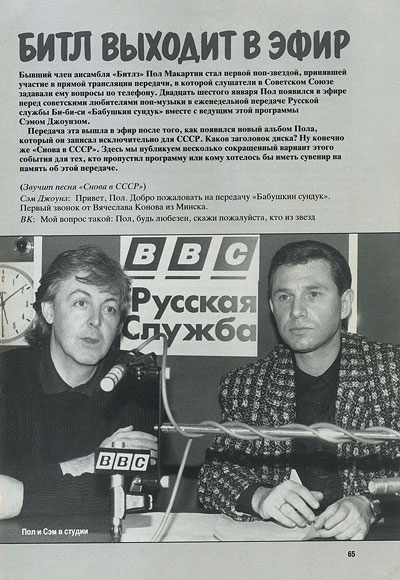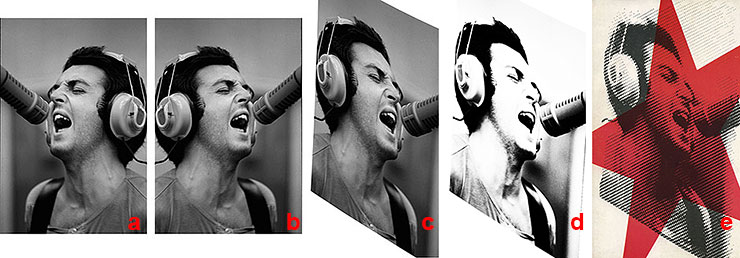как называлась пластинка пола маккартни записанная и выпущенная специально для советского народа
Как называлась пластинка пола маккартни записанная и выпущенная специально для советского народа
1973
ПОЛ МАККАРТНИ + АНСАМБЛЬ «WINGS»
Фирма «Мелодия», 1977-1978 гг.
Рок-энциклопедия
Альбом Пола Маккартни » Band On The Run » был настолько ярким событием во всемирной музыкальной жизни, что советская фирма «Мелодия» никак не могла пройти мимо него. В те годы в СССР уже достаточно широко начал практиковаться выпуск альбомов звезд зарубежной эстрады на отечественном виниле, не стал исключением и Маккартни, тем более что в 1974-м году «Мелодия» уже выпустила миньон (33 об.) с четырьмя песнями из альбома » Ram «.
Однако, если смириться с этими минусами, то можно заметить два существенных плюса: во-первых, альбом, хоть и в таком варианте, все же появился, и коллекционерам это очень понравилось и нравится до сих пор. А во-вторых, качество звучания было по-фирменному прекрасным.
Советский лицензионный винил
Пол Маккартни + ансабль «Wings»
Изготовлено по лицензии фирмы EMI Records (Великобритания)
На английском языке
Ташкентский Завод Грампластинок им. М. Т. Ташмухамедова
+
Апрелевский Ордена Ленина Завод
+
Московский опытный завод «Грамзапись»
Арт. 36-9. Цена 2 руб. 15 коп.
Советский выпуск альбома
«Пол Маккартни + Ансамбль «WINGS»
на фирме «Мелодия». Ташкентский завод грампластинок, 1977 год
Советский выпуск альбома
«Пол Маккартни + Ансамбль «WINGS»
на фирме «Мелодия». Московский завод грампластинок, 1978 год
Советский миньон
Пол Маккартни. Ансамбль «Wings»
Я Люблю Тебя
на фирме «Мелодия», 1983-85 гг.
20 июля 1987 года на студии «Мелодия» был издан альбом Пола Маккартни «Снова в СССР»
Сказать, что это событие стало заметным в жизни граждан Страны Советов это не сказать ничего. Про то, что сэр Пол записывает в Москве альбом было известно давно. Ожидание жгло сердца миллионов советских меломанов. Мечта становились реальностью. Величайший рок-музыкант не просто приехал в СССР, но и записывал здесь новый альбом.
Однако, ожидание омрачалось опасениями, что альбом будет выпущен небольшим тиражом и весь тираж тупо окажется в руках фарцы. Релиз альбома готовился очень долго и только 31 октября 1988 года он поступил в продажу. Как раз в то время в Москве в командировке оказались мои родители, которым было строго-настрого наказано «привезти аленький цветочек». Батя у меня не особый поклонник Битлс, он скорее по итальянцам да Боин М. Но важность момента просек и пообещал сделать все что можно.
Потом было очень многократное прослушивание альбома до истирание новенькой польской иглы. Обсуждение с пацанами.. У моего друга (у того, у которого отец уехал из Уфы за сутки до ВЗРЫВА) отец также был в те дни в Москве и примерно при таких же обстоятельствах купил пластинку на Новом Арбате в книжном магазине.
А потом оказалось, что в кое то веки Апрелевка выдала на гора действительно громадный тираж и эти пластинки постепенно добрались и до провинции. У нас они лежали совершенно свободно еще с год, а то и больше.
Но вернемся к альбому, вот его трек-лист, кстати:
Как называлась пластинка пола маккартни записанная и выпущенная специально для советского народа
Updated November 16, 2014
#2.1-40
Paul McCartney – CHOBA B CCCP (1st edition – 11 tracks)
Пол Маккартни – CHOBA B CCCP (1-е издание – 11 песен)
| Label (Company): |
| ||||
| Country: |
| ||||
| Format: |
| ||||
| Number of records: |
| ||||
| Catalogue number: |
| ||||
| Catalogue number of side 1: |
| ||||
| Catalogue number of side 2: |
| ||||
| Matrix number of side 1: |
| ||||
| Matrix number of side 2: |
| ||||
| Mono or Stereo: |
| ||||
| Rotation speed: |
| ||||
| First release date: |
|
Known combinations of matrix numbers endings:
Известные сочетания окончаний матричных номеров:
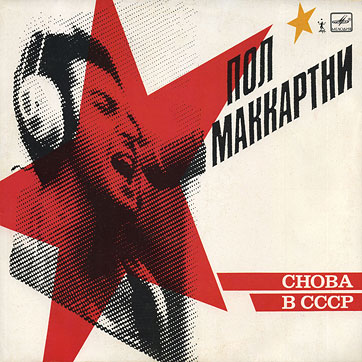 | 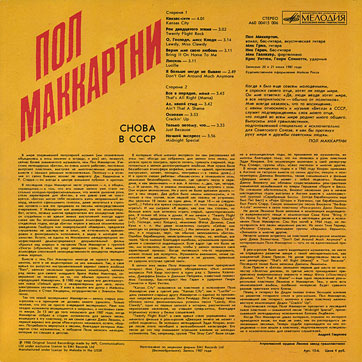 |
| Don’t Get Around Much Anymore (Ellington-Russell) |
Original titles and authors
It’s the 1st edition of CHOBA B CCCP LP containing 11 tracks. Album title on the sleeve is displayed in Russian, but not in English as many non-Russian-speaking collectors think, and is pronounced roughly as ′s-n-o-v-ah v ass-ass-ass-arr that means BACK IN THE USSR or AGAIN IN THE USSR.
Sometimes this record is referred to as THE RUSSIAN ALBUM by Paul McCartney.
On February 11 1990, Soviet newspaper Komsomolskaya Pravda stated: «The idea to record an album exclusively for distribution in the USSR came to Paul McCartney in the spring of 1987 after the meeting with the author of similar-named book «BACK IN THE USSR. THE TRUE STORY OF ROCK IN RUSSIA» Artem Troitsky [Soviet/Russian rock-journalist and music critic].
In April 1988, record company Melodiya signed a contract to acquire exclusive licence to produce and sell Paul McCartney’s album BACK IN THE USSR in the Soviet Union. McCartney was represented by Ron Harris, manager for international licensing with record company EMI, and Richard Ogden, deputy director of McCartney’s own company MPL Communications«.
Various US reference books show October 31, 1988 as the date of the release for the 1st edition of this album. At the same time the sleeves by Leningrad Plant carry «14.09.88г.» on the back side, which means September 14, 1988.
Melodiya, which released trimonthly self-titled catalogue-bulletins, informed about this LP (1st edition) release only in # 1 (January-March) 1989 (page 80) mistakenly listing Paul McCartney as the author of words and music [see Pic. 1] and featured article about this LP on the pages 51, 52 in Licenses. Review section [see Pic. 2]. It is interesting that the illustration (the front side of the sleeve) doesn’t show little star in the right upper corner.
Most likely the 1st edition of this LP appeared for the first time in the shops in the second half of September, 1988 – the writer of these notes found in his private archive the press cuttings where this LP is listed in monthly hit parade of МК (Moskovskij Komsomolets) newspaper as early as for October 1988 [see Pic. 3].
In the annual 1988 hit parade of the same МК newspaper (published January 6, 1989) this LP took the eighth place [see Pic. 4].
Later the 2nd edition of this album containing 13 tracks (two songs were added: I’m Gonna Be A Wheel Some Day and Summertime) was released with the same title and with the same catalogue number. Several noticeable and not very noticeable differences in design and annotation of the 1st and 2nd editions You can find on the main page of the 2nd edition. Also You can find mispressed edition with records containing 12 tracks (but with the same catalogue number too).
«Manufactured under license of EMI Records Ltd (Great Britain). 1987 recording» is stated on the sleeves and labels. Labels carry additional information about the type of recording – «(digital)«.
But in the left lower corner of the back side of the sleeve the following license information is listed – see Pic. 5.
Melodiya’s name is printed as «Melodia».
«Recorded on July 20 and 21, 1987» and «Art design by Michael Ross» is stated in the right upper part of the back side of the sleeve just below the list of musicians who took part in the recording of this LP.
Labels of the 1st edition have song titles listed in Russian, but the sleeves – in Russian and English.
Most labels by Leningrad Plant carry 1988 stated. But You can find records by this Plant, which have labels with 1989 release year stated.
Also two variations (sub-variations) of the back side of the sleeves by Riga Plant are known. In one case 1988 is stated, in other case – 1989. Most likely it says that in the beginning of 1989 during some period of time Melodiya released both editions simultaneously. Indirectly it is confirmed by the fact that You can find so-called «hybrid» issues (they were sold in record shops just so):
Sleeve
Labels
Vinyl
(LP itself)
Edition (number of tracks)
There is one and only sleeve variation for this edition, apart from various color tints of the sleeves and imprint of corresponding Melodiya’s manufacturing division stated in right lower corner of the back side of the sleeves.
Almost all sleeves have the same article («Арт. 15-6«) and price («4 руб.«) listed. Exception is export sleeve variation, which doesn’t carry the price and article at all. Also all sleeves have one and only spine variation.
Some collectors pay great attention to the color of little star on the front side of the sleeve. On the sleeves of the 1st edition it has various tints of yellow (but on some sleeves its color looks more like orange or even brown).
Most of found so far sleeves are made from enameled (chalk overlay) thin cardboard (thick paper). Export sleeve variation is made from laminated thick paper. Sometimes you can find sleeves made of glossy thin cardboard.
You can find sleeves made (glued) different ways [see Pic. 8, 9]:
1) top and bottom edges are the part of the front side of the sleeve,
2) top and bottom edges are the part of the back side of the sleeve.
Sometimes these differences can be noticed when looking attentively at the upper or lower part of the front or back side of the sleeve.
For the other details see the corresponding Plant (Recording Studio) pages of this edition. This page doesn’t display the following label images:
— Baku Plant – was closed approx. in 1971,
— All-Union Recording Studio – was renamed to Moscow Experimental Recording Plant approx. in 1978.
No copy of the 1st edition of this album by Tbilisi Recording Studio has been found yet. Most likely this Studio didn’t release it.
Official vinyl edition of this album was released in the USSR only. Outside the Soviet Union «pirate» vinyl LP (var. 1) containing 11 tracks from the 1st edition was released [see Pic. 10, 11]. Each side included one additional track:
on side 1 – single version of Once Upon A Long Ago (4:12),
on side 2 – Extended Version of Once Upon A Long Ago (6:00), which was 7 seconds shortened from original 6:07.
Sleeve for this LP was copied from the original 1st edition by Aprelevka plant, but with the background of back side changed from yellow to white and the little star on the front side changed to red. Correspondingly additional tracks are not stated on it. White labels and spine of the sleeve don’t carry any lettering. The LP itself carries the following handwritten matrix numbers [см. Рис. 12]:
on side 1 – PMC USSR-A,
on side 2 – PMC USSR-B.
Also it is known about existence of another variation of «pirate» edition (var. 2) released outside the USSR [see Pic. 13, 14]. Sleeve for this LP was copied from the original 1st edition by Aprelevka plant as well. Back side has yellow background changed to white, and the words «ПОЛ МАККАРТНИ» (in the left upper corner) printed in black. Front side has the little star changed to red and shows a black frame added on perimeter.
White labels and spine are blank. Vinyl has 11 tracks and it shows the following hand-etched matrix numbers (which confirm that the record was manufactured not by Melodiya):
on side 1 – A60 00415 006 – A ף OTTA TTT ΛШl,
on side 2 – A60 00415 006 – B ף.
On January 26, 1989 Paul McCartney took part in one of the weekly Granny’s Chest radio programs of the BBC Russian Service, which was dedicated to CHOBA B CCCP LP released in the Soviet Union. Sam Jones was the anchor, Seva Novgorodtsev helped him with translation. Live on air Paul told about his new album and answered questions from the broadcast listeners from various cities of the USSR. You can listen to this program [see Pic. 15]. ALL THE BEST! 2LP-set signed by McCartney was sent as a present to everyone who had been able to reach the live program by the phone. Ukrainian girl from Kiev Natalya Bortsova [see Pic. 16, 17] who was 16 years old at the time became a lucky owner of the autograph. It’s a matter of fact that not everyone got the records which were sent.
In Summer of 1989 THE BEATLE GOES ON AIR article about this special «radio bridge» was published in Англия (England) magazine, # 111 [see Pic. 18]. It should be noted that mentioned magazine was issued by British Government and distributed in the Soviet Union according to the terms of agreement between governments of Great Britain and the USSR. Nevertheless, it was pretty tricky to find this magazine on the open market.
About the image of Paul McCartney on the front side of the sleeve. Photo was taken by Linda McCartney during the recording of RAM at CBS Studios, New York (in the end of 1970 or in the beginning of 1971). The sequence of changing of the original photograph to the image on the sleeve is shown on Pic. 19-23:
a) original photo;
b) flipped image;
c) transformed image;
d) enlightened image;
e) final image on the sleeve (after extra retouch and adding visual effects).

Pic. 1. Fragment of page 80 of Melodiya 1, 1989 catalogue-bulletin
Рис. 1. Фрагмент страницы 80 каталога-бюллетеня «Мелодия» 1, 1989
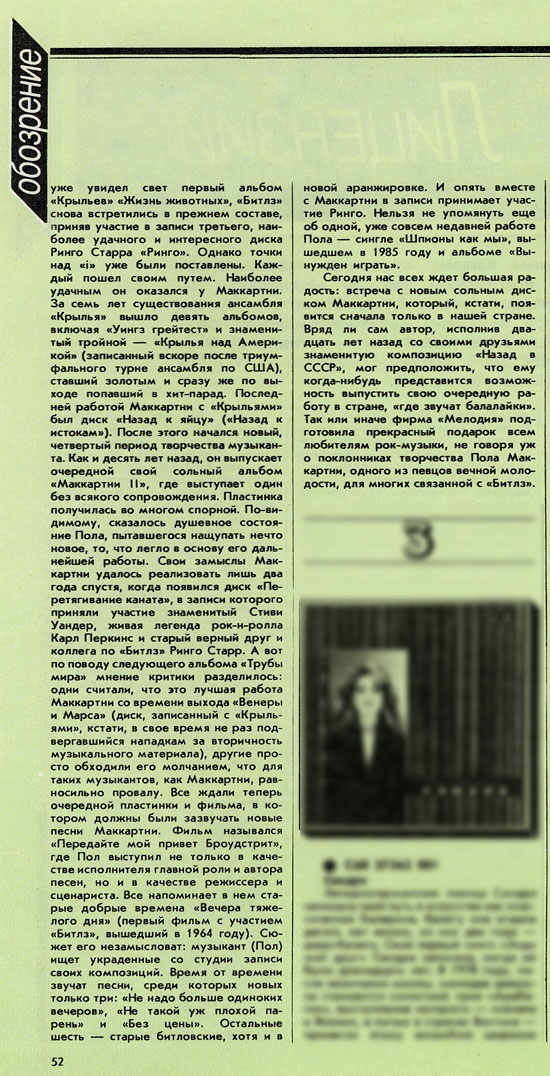
Pic. 2. Fragments of pages 51, 52 from the Licenses. Review section of Melodiya 1, 1989 catalogue-bulletin
Рис. 2. Фрагменты страниц 51, 52 из раздела «Лицензии. Обозрение» каталога-бюллетеня «Мелодия» 1, 1989
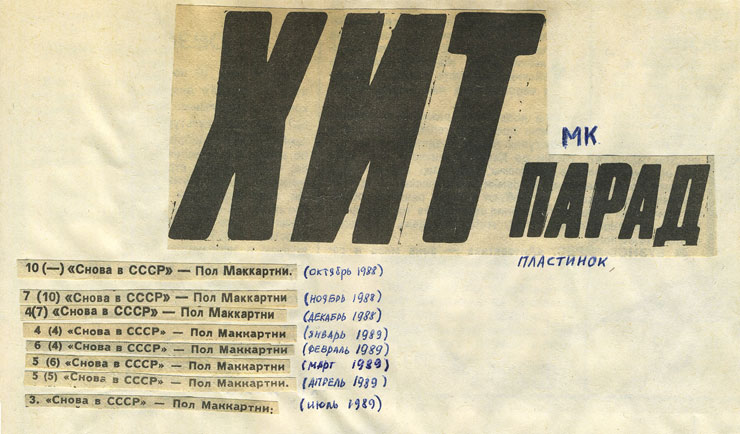
Pic. 3. Fragments of the monthly hit parades of MK newspaper for October, November, December of 1988; January, February, March, April and July of 1989
Рис. 3. Фрагменты месячных хит-парадов газеты «МК» за октябрь, ноябрь, декабрь 1988 года; январь, февраль, март, апрель и июль 1989 года

Pic. 4. Fragment of the annual 1988 hit parade of MK newspaper
Рис. 4. Фрагмент годового хит-парада газеты «МК» за 1988 год

Pic. 5. Fragment of the back side of the sleeve (left lower corner) carrying the license information
Рис. 5. Фрагмент оборотной стороны обложки (левый нижний угол) с информацией о лицензии
